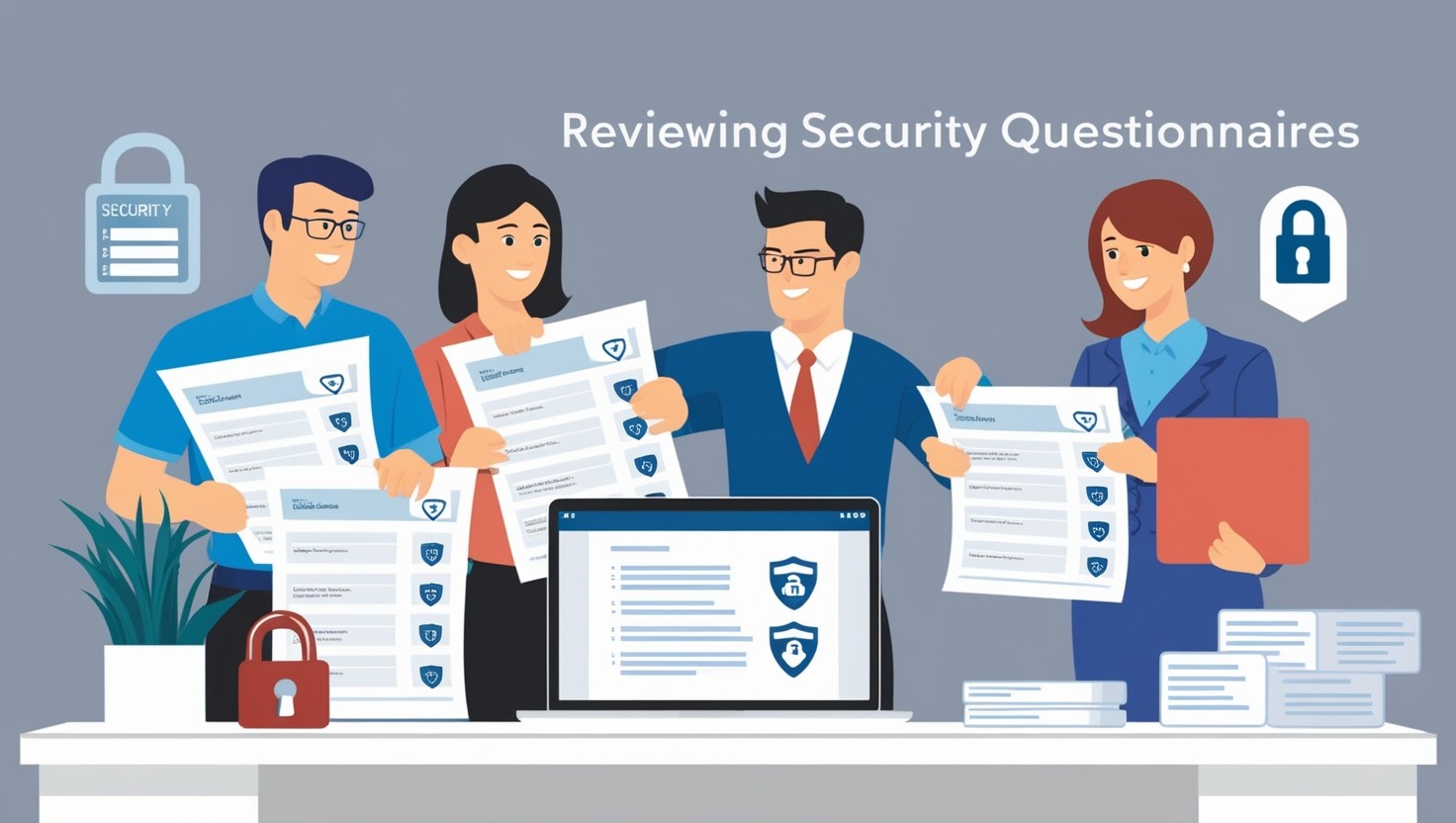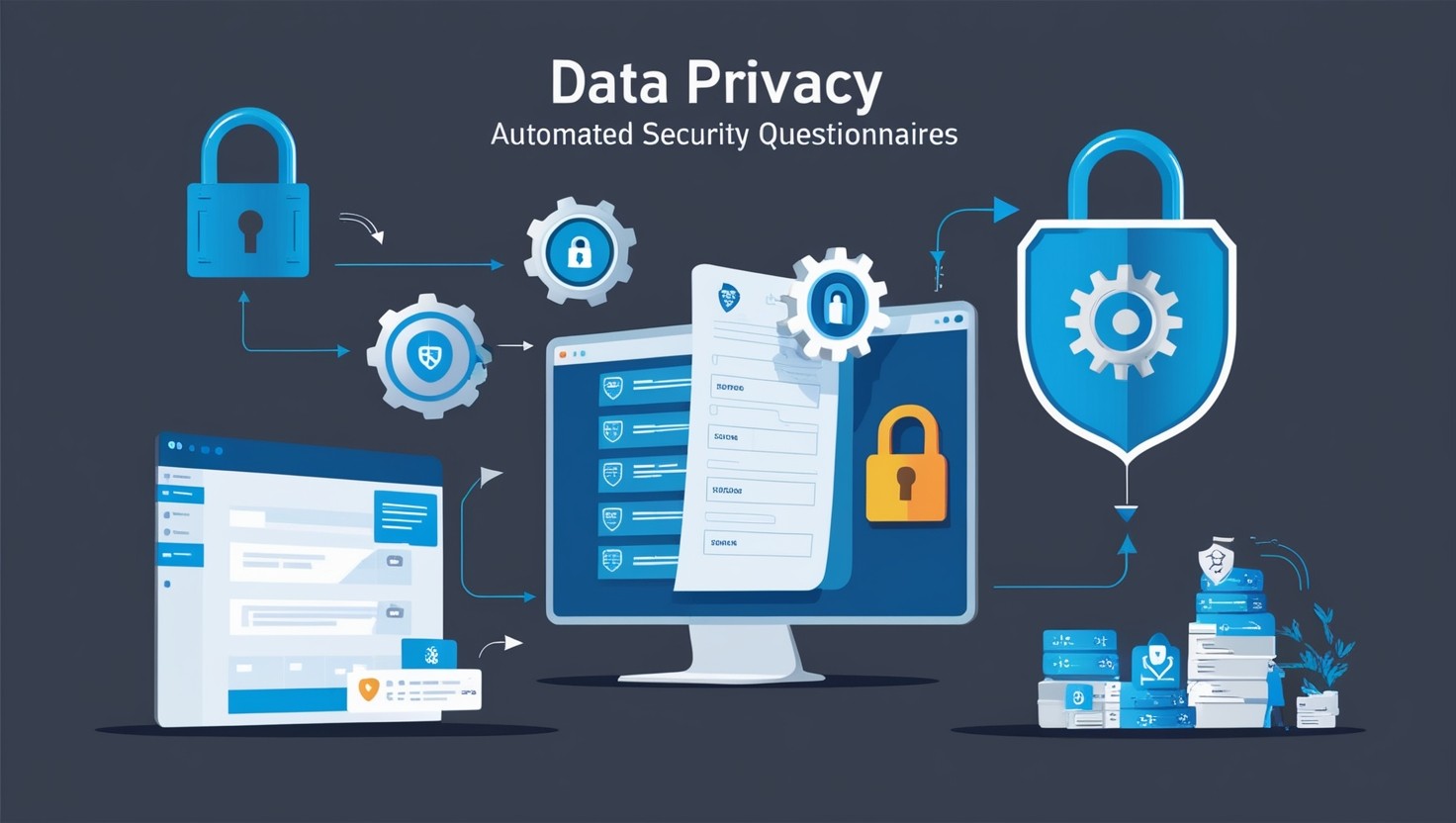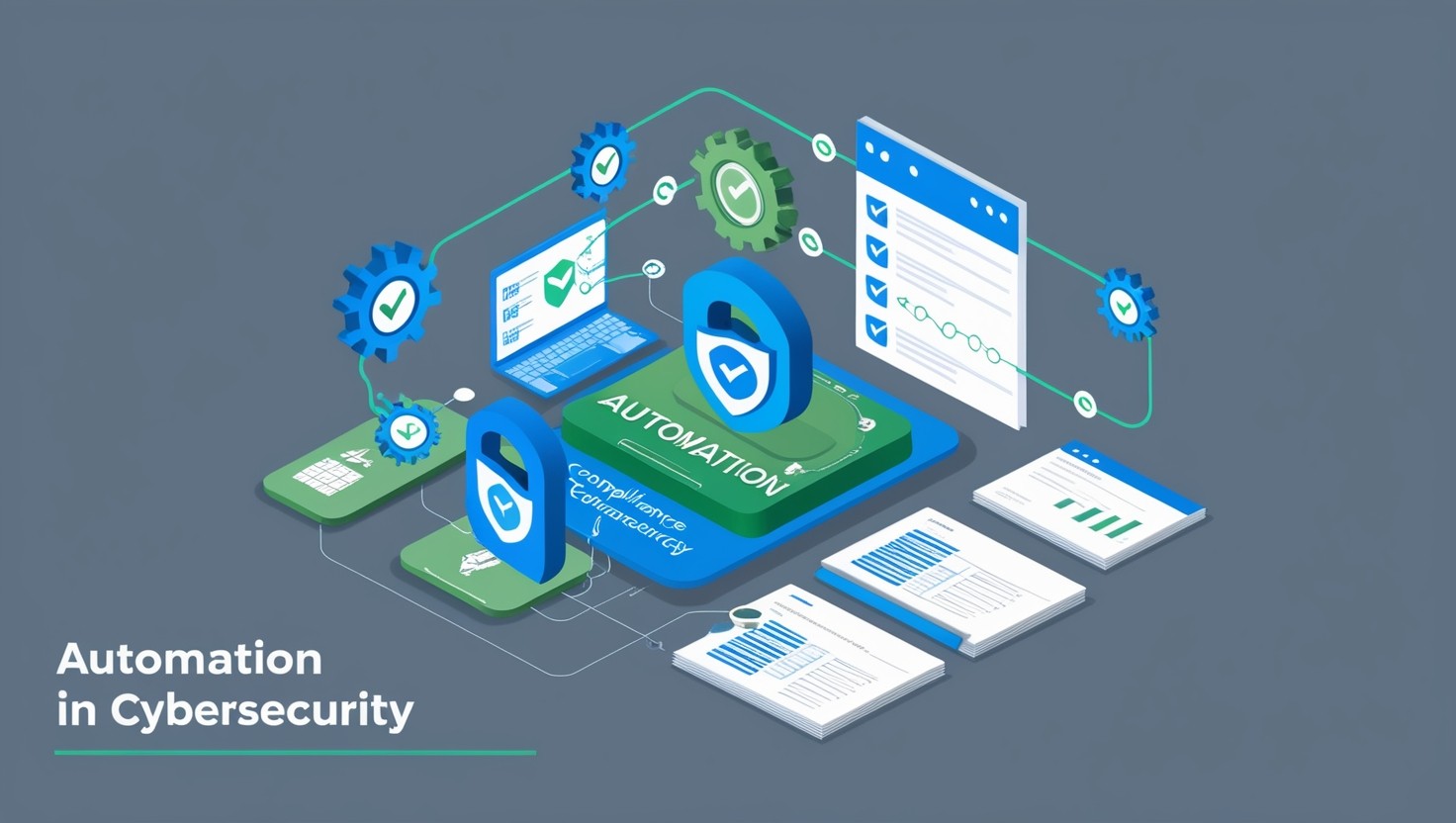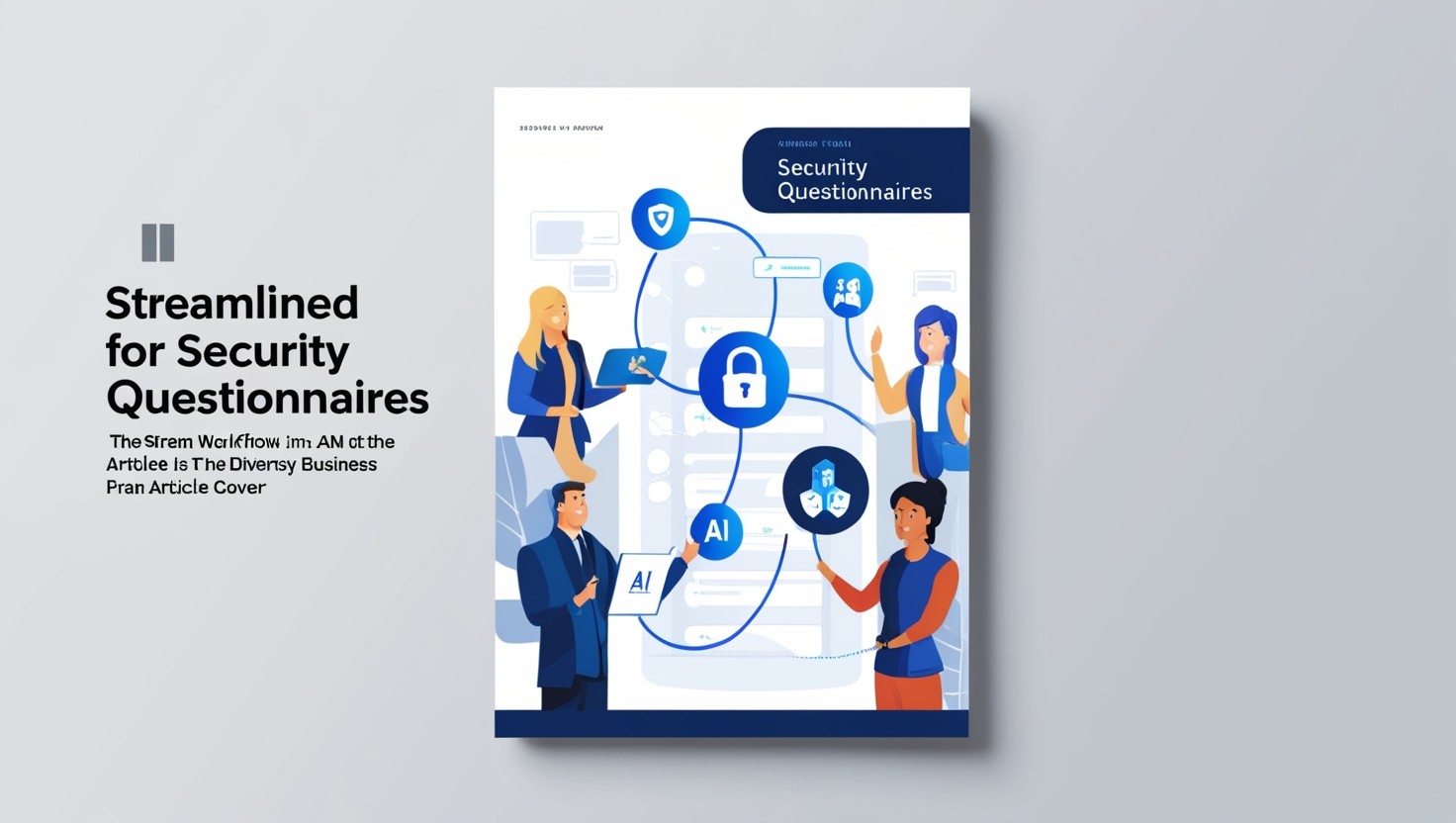Continuous feedback loops for improving security questionnaires
Share This Article
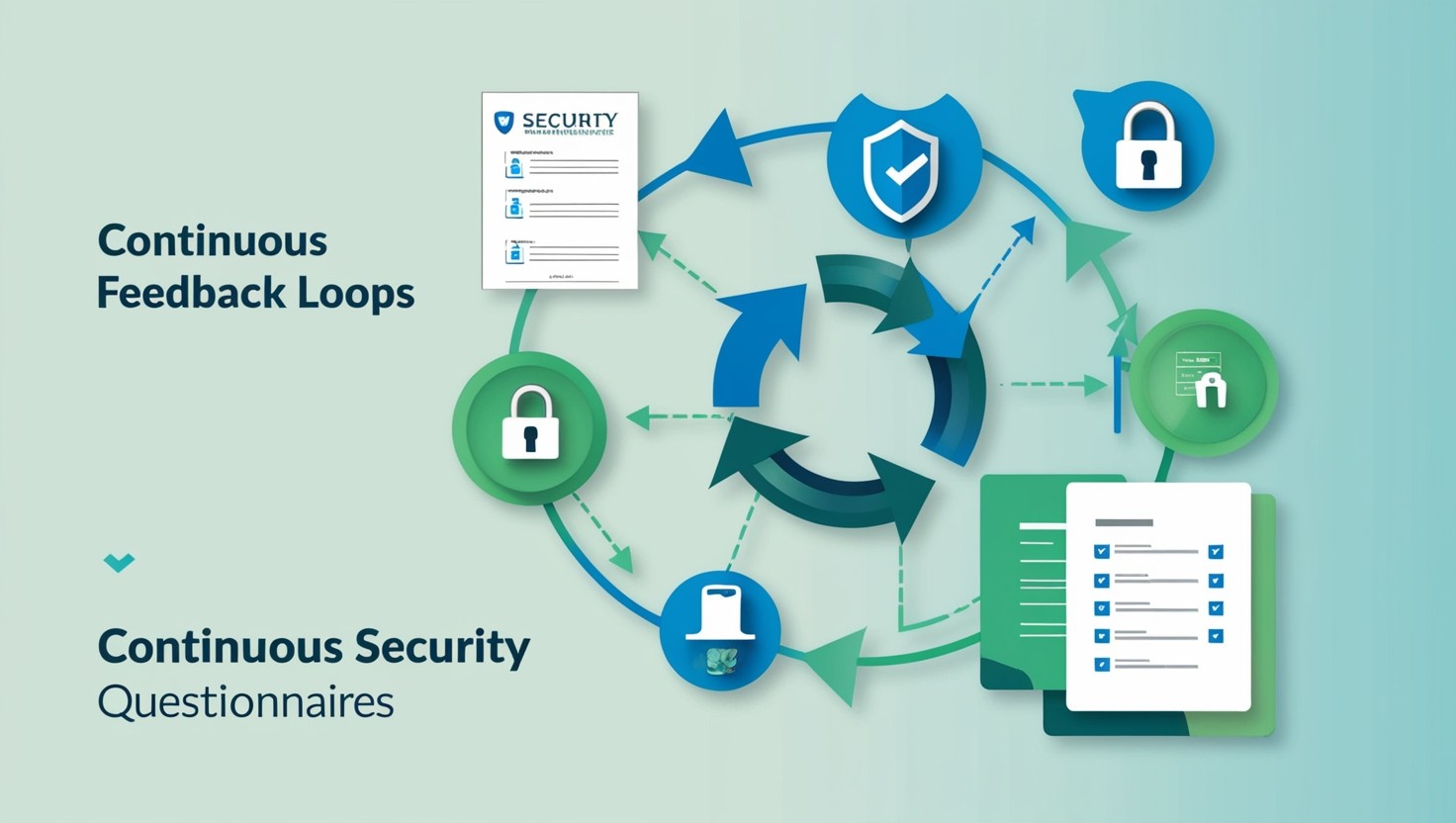
Understanding Feedback Loops
Feedback loops are instrumental in the continuous improvement of business processes, products, and services. By providing valuable insights for enhancement, they drive growth and development.
Importance of Feedback Loops
Driving Growth and Development: Feedback loops play a crucial role in business by offering insights that guide the improvement of processes, products, and services.
Enhancing Customer Satisfaction: They help address customer complaints and refine services to better meet client needs, promoting loyalty and retention.
Improving Internal Processes: Positive feedback from employees aids in optimizing internal structures, fostering innovation and a productive work environment.
Reducing Turnover Rates: Companies with effective feedback systems experience 14.9% lower turnover rates, showcasing the value of retaining top talent.
Types of Feedback Loops
Feedback loops come in various forms, each with its own significance and impact on business operations. The primary types include:
Positive Feedback Loops
These loops involve gathering positive feedback from employees to enhance workplace conditions and internal structures. The focus is on leveraging constructive feedback to drive innovation and continuous improvement (Formaloo).
Negative Feedback Loops
Negative feedback loops are crucial for listening to customer complaints and using this feedback to improve products or services. These loops promote stability, efficiency, and resilience within organizations. They also minimize negative word of mouth by addressing customer concerns promptly, showcasing that feedback is taken seriously.

Understanding and implementing effective feedback loops can significantly enhance the effectiveness of security questionnaires. By continuously gathering and analyzing feedback, organizations can streamline processes, reduce the time taken to complete security assessments, and ultimately improve the overall experience (continuous improvement in security questionnaires).
For further insights on this topic, explore related articles on automating security questionnaires and best practices for security questionnaires.
Utilizing Feedback in Business
In the realm of business operations, feedback loops play a pivotal role in driving growth, enhancing customer satisfaction, and improving internal processes.
Customer Feedback Loops
Customer feedback loops involve obtaining responses from customers and reacting to those responses, enabling businesses to improve based on the information received (Formaloo). These loops are essential for understanding customers' needs, expectations, and pain points. By addressing these issues, companies can enhance customer experience and retain their client base.
Negative feedback loops are particularly valuable for product and service improvement. They help companies identify areas where their offerings underperform and address these issues swiftly, ensuring they remain competitive in the market (HubSpot). For example, Slack utilizes customer feedback to drive continuous improvement, even if changes are not explicitly requested.
Key Benefits of Customer Feedback Loops
Identifying Pain Points: Proactive identification of issues helps in timely resolution.
Improving Relationships: Enhances customer trust and loyalty.
Boosting Satisfaction: Results in high customer retention rates.
Driving Continuous Improvement: Fosters innovation and development.
For more on improving the security questionnaire experience, check out our related resource.
Employee Feedback Loops
Employee feedback loops focus on gathering employees' suggestions and complaints to improve internal structure and workplace satisfaction. Positive feedback loops within the workplace contribute to boosted morale, reduced employee turnover, and enhanced collaboration among teams.
Happier employees lead to higher levels of retention and performance, ultimately benefiting the company both culturally and financially. Employee feedback loops can also uncover inefficiencies and areas for improvement in business operations, fostering a culture of continuous improvement.
Key Benefits of Employee Feedback Loops
Boosting Morale: Positive feedback leads to a more satisfied workforce.
Reducing Turnover: Happy employees are less likely to leave.
Enhancing Collaboration: Promotes teamwork and a positive corporate culture.
Identifying Inefficiencies: Helps spot areas needing improvement.
To dive deeper into strategies, refer to our guide on continuous improvement in security questionnaires.
Utilizing both customer and employee feedback loops efficiently can help companies achieve better operational outcomes, enhance product and service quality, and foster a positive workplace environment. For further reading on related topics, explore our sections on efficiency in security questionnaires and best practices for security questionnaires.
Enhancing Business Strategies
Integrating feedback loops into business strategies is essential for growth and optimization. By gathering and analyzing feedback from various sources, organizations can refine their strategies and improve overall performance.
Benefits of Feedback Loops
Feedback loops offer numerous benefits that help businesses thrive. They can lead to data-driven decisions, refined strategies, and overall performance enhancements (SmartSurvey). Below are key advantages of implementing feedback loops:
Improved Customer Satisfaction: By acting on feedback from customers, businesses can identify areas for enhancement and adapt their products or services to better meet customer needs. This often results in higher satisfaction rates.
Increased Productivity and Efficiency: Feedback from employees and stakeholders can highlight inefficient processes or bottlenecks, enabling businesses to optimize their operations and boost productivity.
Problem Resolution: Regular feedback helps in identifying and resolving issues promptly. This leads to better problem-solving and improved operational stability.
Enhanced Innovation and Development: Insights gathered from feedback can spur innovation, helping businesses develop new products or improve existing ones.
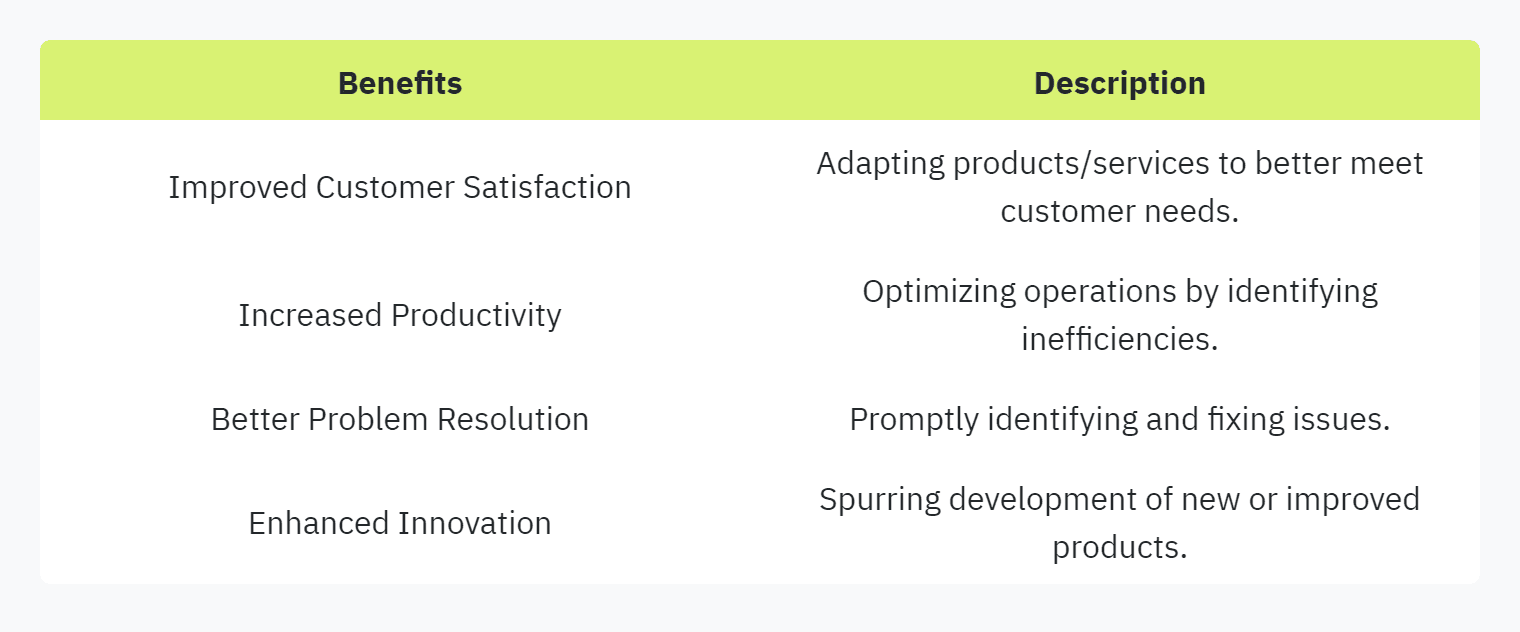
For more insights on improving customer satisfaction through feedback, refer to our article on improving security questionnaire experience.
Maximizing Feedback Loop Success
To maximize the success of feedback loops, businesses need to implement them effectively. Here are some strategies:
Regular Collection of Feedback: Continuously gather feedback from customers, employees, and stakeholders to keep your data current and relevant.
Act Promptly on Feedback: Respond to feedback as soon as possible. Delayed action can result in missed opportunities for improvement.
Ensure Anonymity: Allow respondents to provide feedback anonymously, encouraging more honest and valuable insights.
Utilize Technology: Leverage modern tools and systems for efficient feedback collection and analysis (SmartSurvey).
Communicate Changes: Inform stakeholders about the changes made in response to their feedback, demonstrating that their input is valued and impactful.
Consider implementing a system for tracking security questionnaire responses to enhance the feedback mechanism's effectiveness in security-related processes.
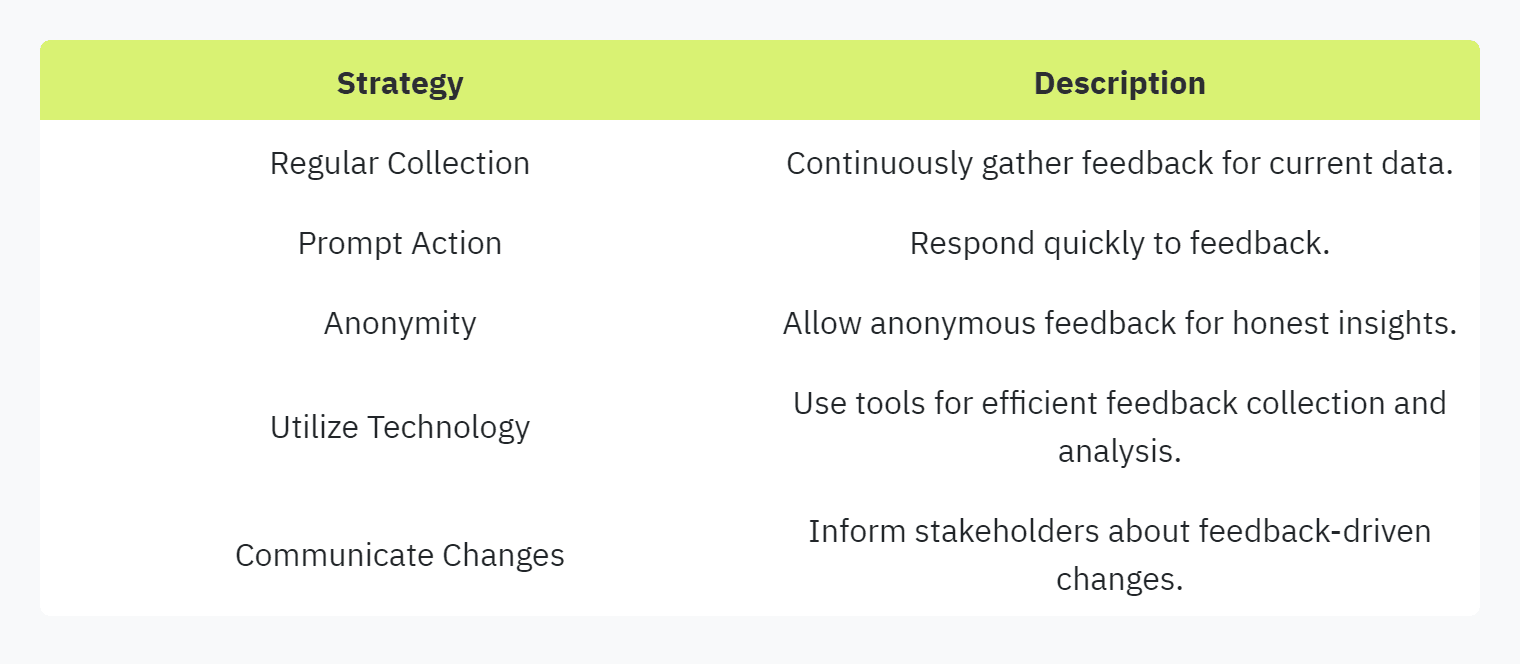
By implementing these strategies, organizations can ensure that their feedback loops are effective and sustainable, leading to optimized business strategies. For more practical tips, check our guide on best practices for security questionnaires.
Implementing Effective Feedback Systems
Challenges in Feedback Implementation
Implementing feedback loops in security questionnaires can present several challenges that must be addressed to maximize their effectiveness. Understanding these challenges is crucial for developing strategies to overcome them.
Resistance to Change
One of the most common obstacles is resistance to change among employees and stakeholders. Security and compliance officers may be accustomed to established methods for handling security questionnaires and may be hesitant to adopt new feedback systems.
Poor Communication
Communication breakdowns can significantly hinder the feedback loop process. Ineffective communication channels can lead to misunderstandings and misinterpretations of feedback, reducing the quality and usefulness of the data collected.
Data Overload
Feedback systems can generate large volumes of data. Without proper data management techniques, this can lead to information overload, making it difficult to extract actionable insights.
Strategies for Overcoming Challenges
To effectively address these challenges, it's essential to implement targeted strategies. These strategies will ensure that feedback loops for security questionnaires are both efficient and effective.
Encouraging Open Communication
Establishing clear and open communication channels is vital. Providing training sessions, regular updates, and creating forums for feedback discussions can help in fostering an environment where open communication is encouraged.
Ensuring Clarity in Communications
Providing clear guidelines and detailed instructions on how to provide and interpret feedback can minimize misunderstandings. Using standardized forms and clear language can also improve the quality of the feedback received. For more tips, visit our article on simplifying security questionnaire language.
Focusing on Relevant Metrics
To avoid data overload, it's important to focus on relevant metrics that align with the organization's goals. Prioritizing key performance indicators (KPIs) related to security and compliance will ensure that the feedback collected is meaningful and actionable. For further insights, refer to our coverage on key metrics for security questionnaire automation.
By understanding the challenges and implementing these strategies, organizations can enhance their security questionnaire automation efforts, ensuring that feedback loops contribute to continuous improvement and effectiveness. Ensuring these feedback loops can ultimately lead to better security practices and a more robust compliance posture.
Enter your email to start accelerating your sales today.


